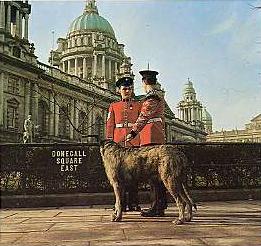The
City Hall. |
||||
| Built
around 1903, in the grand Classical Renaissance style, the City Hall dominates
the main shopping area. Incorporating After the partition of Ireland in 1921, Northern Ireland's first parliment was convened in the City Hall, and opened by King George V of England. Queen's University, with its mellow brickwork and Tudor style cloister, was built in 1849 by Charles Lanyon who designed who was responsible for many of Belfast's most prestigious buildings, he was also the architect who remodeled Killyleagh Castle in County Down. The university area is full of charming Edwardian terraces with magnolia trees in their front gardens. It has recently received much media attention relating to the loutish and destructive behavior of drunken students in the early hours of the morning. This southern part of the city is good for moderately priced restaurants, pubs and accommodation, and for shopping and theater. The Botanic Gardens and the Ulster Museum are here too. Some of Belfast's grandest buildings are banks, and why wouldn't they be considering their tariffs and the monopolistic policies the so called leading four appear to follow. On Waring Street round the corner from the North Street tourist information centre - the interior of the Ulster Bank (1860) is like a Venetian palace, and the Northern Bank in the same street started life as a market house in 1769.
|
||||
|
|


 Italian marble interior, it looks not unlike American state capitol buildings
except for the big statue of Queen Victoria at the front. She visited
Belfast in 1849, after which many places and buildings came to bear her
name, these include a hospital, a park, a man made island on which now
stands the Belfast shipyard, the deep water channel in the harbour and
the University.
Italian marble interior, it looks not unlike American state capitol buildings
except for the big statue of Queen Victoria at the front. She visited
Belfast in 1849, after which many places and buildings came to bear her
name, these include a hospital, a park, a man made island on which now
stands the Belfast shipyard, the deep water channel in the harbour and
the University.